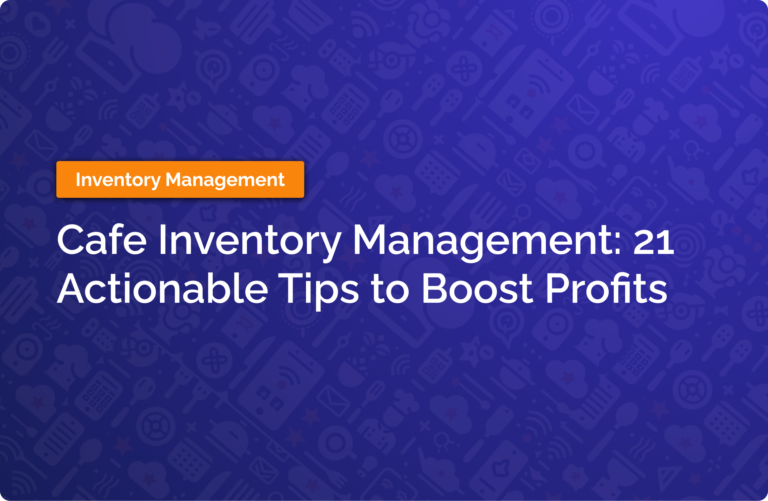
Just like any other food service establishment, cafes can see huge benefits from running an effective cafe inventory management process.
This article dives into the importance of cafe inventory management, providing actionable strategies and tactics that your business can implement right away to help drive profitability.
What Is Cafe Inventory Management?
Cafe inventory management is the process of ordering, storing, using, and tracking all stock items needed to produce the menu items of a cafe. This includes any and all items that are sold to customers, from coffees to bakery items to the paper cups you use to serve your drinks.
The main goal of inventory management is to monitor stock levels so that you can place accurate orders for just the right amount of stock to avoid running out of items.
It also involves selecting the right suppliers for your cafe, monitoring their prices, and getting better deals through tactics such as negotiating prices and buying in bulk.
Why Cafes Should Care About Inventory Management
Proper inventory management practices can do wonders for a cafe’s bottom line. It directly impacts the business’ financial health, affecting costs, revenues, and ultimately, profitability.
From a tactical point of view, accurate inventory management ensures that cafes never run out of menu items so that they can always meet customer demand. This in turn can improve customer satisfaction and drive loyalty.
Inventory management also helps cafes avoid waste and reduce their costs. By ordering just enough stock, a cafe can prevent ordering too much of an ingredient that would spoil.
Another benefit of inventory management is that it can help cafes to optimize their menus to squeeze out more profit. Inventory management delivers strategic insights into which items are the most profitable. This insight helps guide a cafe towards developing more profitable recipes that align with customer preferences.
21 Tips for Cafe Inventory Management
Navigating the intricacies of cafe inventory management can seem daunting.
However, learning about these processes is key to ensuring your cafe operates efficiently and profitably. To help make this process more manageable, we’ll break it down with these 21 tips that can be implemented in your cafe right away.
Inventory Control
At the center of every successful cafe lies a strong inventory control process.
Inventory control is about making sure that you always have the right amount of stock on hand and that the stock is used efficiently.
1. Schedule Regular Inventory Counts
Inventory counts involve reviewing your in-stock items and recording the quantity of each.
Whether you’re using a sophisticated inventory management software solution or a simple spreadsheet, scheduling regular inventory counts should be at the top of every cafe’s list.
The frequency at which cafes conduct inventory counts differs from cafe to cafe. Many choose to perform counts 1 to 2 times per week, but the frequency for your specific cafe should align with your ordering and delivery schedule. For instance, you could count inventory every time you place orders on Sundays, Tuesdays, and Fridays.
You can find more details to help determine how often you should conduct inventory counts in this article.
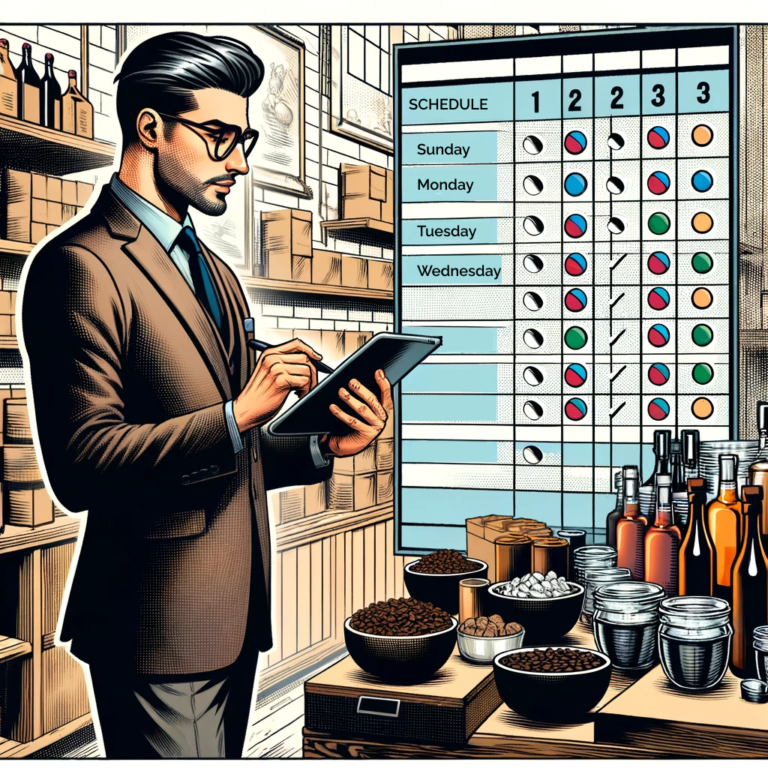
2. Implement First-In, First-Out (FIFO)
The First-In, First-Out principle is a simple yet effective method to minimize waste in your cafe.
FIFO is an operating principle where the oldest stock (first in) is used before the new stock (first out). It’s useful because it helps cafes to use perishable goods before they expire.
You can learn more about why most businesses in the hospitality industry choose to implement FIFO in this guide.
3. Use Software to Track Sales and Predict Future Demand
Cafes can use inventory management software to keep track of sales data and begin identifying patterns and trends. This information is useful for predicting what customers will want in the future, which in turns lets you adjust inventory levels proactively to meet anticipated needs.
This data can also help to inform menu planning and promotional strategies.
For instance, a cafe might find that lavender lattes are especially popular during the early summer and might decide to run promotions or specials for this beverage during that time.
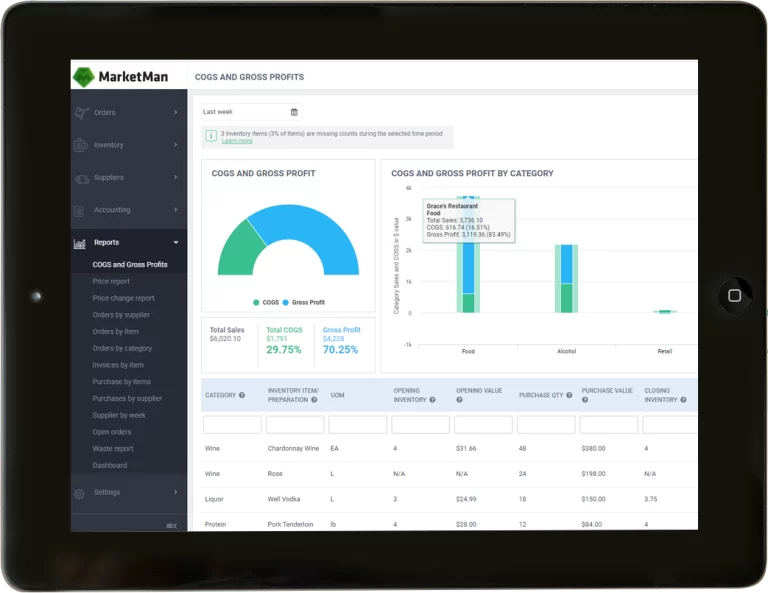
4. Keep Storage Areas Organized for Efficient Counts
The physical aspect of inventory management—how and where you store your stock—plays an important role in how efficiently a cafe is able to perform inventory counts.
Efficient storage solutions maximize space and improve accessibility. A well-organized stockroom allows you to utilize your cafe’s storage space in a cost effective manner. The most frequently-used items should be placed in easy-to-reach spots so that staff can quickly access them.
Investing in better shelving units, reorganizing and optimizing the layout of your storage area, or adopting storage practices that enhance workflow are all tactics a cafe can take to improve inventory management.
Menu Management Tips
Menu management is a whole lot more than just deciding what beverages to offer your customers.
A well-thought-out menu can significantly impact your cafe’s profitability. And so planning your menu should be treated as a strategic part of your business plan.
Here are key inventory management strategies that can help with menu management:
5. Standardize Portion Sizes
Standardizing portion sizes across your menu is the first step toward consistency. This practice ensures that every item served to customers is precisely measured and portioned, which helps to make sure that you don’t waste money on overportioned servings.
When you know exactly how much of each ingredient goes into an item, ordering and stock levels also become much more predictable. This allows you to place more accurate order quantities with your suppliers and reduces the risk of over- or underordering.
6. Create a Balanced Menu
Creating a balanced menu means strategically offering both high and low margin items to your customers.
By diversifying your menu, you can more effectively manage the flow of ingredients in and out of your cafe. Dishes that bring in more profit can help cover the costs of pricier ingredients, while less profitable items that sell more frequently keep your inventory moving. This way, you’re less likely to be left with ingredients that go unused.
7. Make Ingredients Versatile
Designing your menu to use ingredients across multiple dishes creates a more manageable inventory process.
This approach is referred to as cross-utilization. Since you’re using an ingredient across multiple recipes, it promotes using a higher quantity of the ingredient. This in turn gives you more confidence to order the ingredient in bulk, giving you a better price from suppliers.
Cross-utilization also minimizes waste, as you’re less likely to end up with surplus ingredients that have no purpose. And it simplifies the vendor management process since you can cut out vendors that supply rarely-used specialty items.
8. Conduct Menu Engineering for Your Cafe
Menu engineering is the process of analyzing the popularity and profitability of your menu items so that you can make strategic adjustments to your menu and recipes.
Cafes use the process to understand which menu items are making the most money and which are making the least. With this knowledge, cafes can make strategic decisions on which items to remove from the menu to make space for other more profitable ones.
Menu engineering can drive many other strategic decisions about a cafe’s menu. To learn more about this concept, you can read this guide.
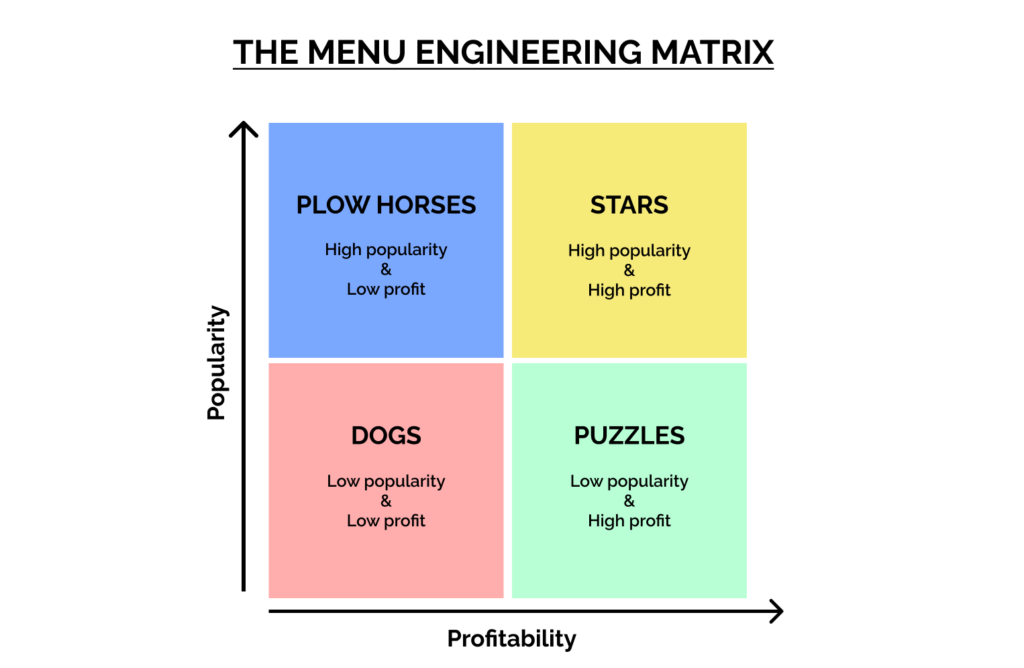
9. Review Your Menu At Least Once a Year
Customer preferences in the cafe industry change rapidly.
Doing a deep-dive review of your menu at least once a year keeps it fresh and makes sure that you’re maximizing opportunities to create more profit.
For instance, menu reviews allow you to phase out dishes that don’t sell well and introduce new ones that might be more popular and profitable.
Supplier Management
10. Track Supplier Prices Over Time
Use inventory management software to track supplier prices over time so that you have a long-term view of price fluctuations from each vendor.
This approach lets you proactively identify when a vendor’s prices are getting too high. If you find the prices from a vendor are increasing too rapidly, it could be time to try to renegotiate the price or switch to a different vendor.
11. Compare Prices Across Suppliers
You can also use inventory management software to easily compare prices across different vendors.
This lets you identify which vendors have the best price for your stock items so that you can carefully choose vendors with the best prices for your business.
12. Conduct Regular Supplier Performance Reviews
While you should be tactically tracking and comparing vendor prices quite often, it’s also helpful to set aside time to conduct more thorough supplier performance reviews.
This involves systemically evaluating your vendors based on a number of criteria such as product quality, delivery timeliness, reliability, and the overall value they offer your cafe.
Performance reviews provide your cafe with a structured way to evaluate all of your vendors and identify areas for improvement. Insights from these reviews can be presented to suppliers in a constructive way to strengthen communication and the overall relationship.
13. Use Data to Negotiate Better Deals
With concrete data on supplier prices, comparisons, and reviews, you can use this information to negotiate better deals with vendors.
For instance, you might find that you’re happy with the prices of most items from a certain supplier. Yet their cost of flavored syrups has increased over time to be higher than other suppliers. You could share this data with the supplier and use it to negotiate better terms for their syrups.
Get the ultimate guide to inventory management software
- Inventory management software essentials
- What does inventory management software do?
- Signs you need this software
- How much money I can save & ROI
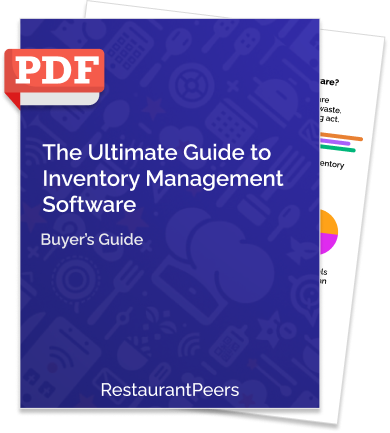
Ordering Efficiencies
A main benefit of implementing inventory management for a cafe is that it makes placing orders more efficient and accurate.
Here are some strategies for improving your cafe’s ordering processes:
14. Create an Order Guide
Creating an order guide involves putting together an instruction manual that tells staff how and when inventory should be ordered. This guide details the specific products needed, the preferred vendors for those products, the ideal quantities to maintain optimal inventory levels, and the timing for reorders.
Having an order guide provides clear direction to staff and creates consistency in ordering practices. Importantly, it limits the likelihood of errors happening in the order process.
15. Establish Par Levels
Par levels refer to the minimum amount of inventory needed to meet customer demand until a cafe’s next delivery. It’s a safety net that prevents cafes from stocking out of necessary goods and helps guide cafes to determine order quantities.
Having established par levels makes the ordering process much more seamless.
For example, a cafe might establish 4 cases of oat milk as their par level. Every time the cafe orders oat milk, they’d simply count how many cases they have on hand, and order the difference.
Let’s say the cafe had 1 case of oat milk on hand. They’d decide to place an order for 3 cases to bring their stock back up to the par level of 4 cases.
You can learn more about how to set par levels in this guide.
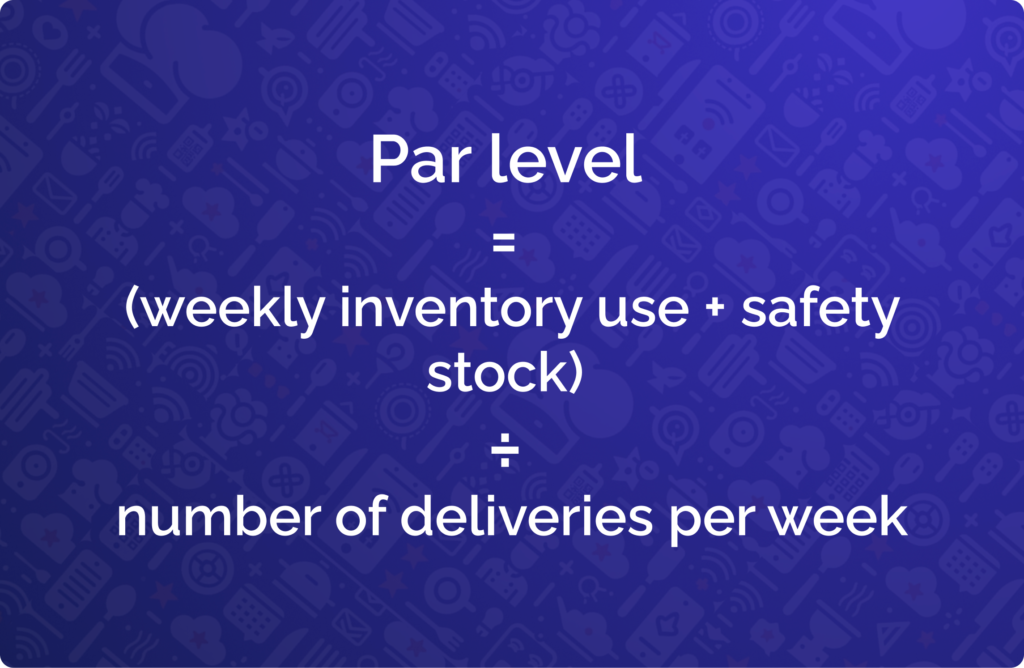
16. Leverage Automation for Reordering
Certain inventory management software such as MarketMan can automate the reordering process by placing orders automatically based on predefined criteria such as sales velocity or par levels.
This method could be useful for fast-moving goods such as bakery items. If you have daily sales data from your POS connected with your inventory management software, it can be set to simply reorder the bakery items daily based on what’s sold.
17. Leverage Bulk Purchasing to Secure Better Deals
As you gain a deeper understanding of your inventory needs and become more comfortable at predicting required stock levels, you’ll be able to identify which ingredients are appropriate for buying in bulk.
Ordering bulk quantities lets you take advantage of volume discounts and negotiate better pricing structures with your suppliers.
The practice also fosters stronger relationships with vendors which can lead them to offer your cafe more favorable prices.
Staff Training & Management
Once you’ve decided your inventory management processes, it’s time to get your staff on board so that they can start contributing.
18. Train Your Staff
Comprehensive training on inventory management practices equips your staff with the knowledge and skills they need to manage stock effectively.
Regular training sessions ensure that all team members are on the same page and can contribute to your inventory process.
19. Choose Specific Employees to Do Inventory
Assigning inventory tasks to designated team members creates consistency and accountability.
These individuals become experts in managing stock levels, ordering supplies, and conducting audits. Their specialized focus can lead to more accurate inventory tracking and a reduction in errors.
20. Implement Cross-Training for Staff
While your cafe should have specific employees assigned to inventory, it can also be helpful to implement cross-training for other employees in different roles.
This helps prepare your staff to fill in for each other if needed, such as when someone calls out sick.
21. Stay Involved in the Process
As the business owner or manager, you should remain deeply involved in the inventory process.
By remaining part of the process, you can continue to oversee it, identify challenges, and make changes where necessary. It also signals to your team that inventory management is a priority and encourages them to take their responsibilities seriously.